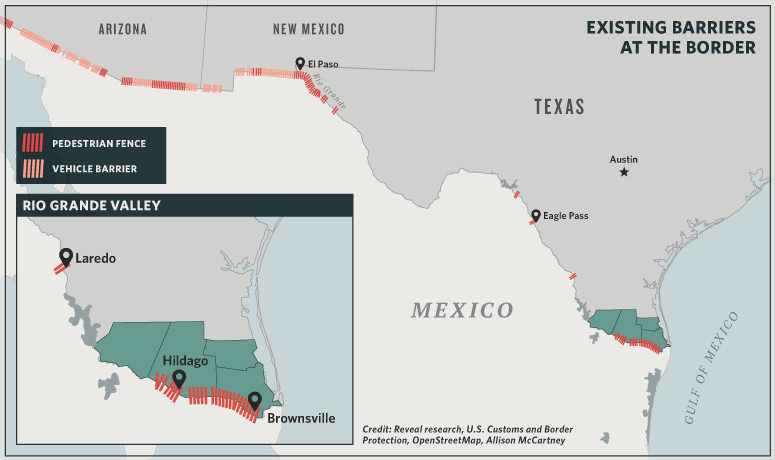Not that anyone pushing for a border wall cares, but just so you know.
There’s been a lot of debate about how effective the Bush-era barrier has been at keeping out illegal crossers and drug smugglers. Some data indicates the barriers have encouraged people to cross in places where there isn’t one. But the handprints show that a determined person can still easily scale it.
What the border fence has kept out instead, according to environmentalists, scientists and local officials, is wildlife. And the people who have spent decades acquiring and restoring border habitat say that if President Donald Trump makes good on his promise to turn the border fence into a continuous, 40-foot concrete wall, the situation for wildlife along the border — one of the most biodiverse areas in North America — will only get worse.
Right now, a mix of vehicle barriers and pedestrian fencing covers only about one-third of the nearly 2,000-mile U.S.-Mexico border. Even with all those gaps, experts say the barriers have made it harder for animals to find food, water and mates. Many of them, like jaguars, gray wolves and ocelots, are already endangered.
Aaron Flesch, a biologist at the University of Arizona, said most border animals are already squeezed into small, fragmented patches of habitat.
“If you just go and you cut movements off,” he said, “you can potentially destabilize these entire networks of population.”
Still, the impacts of the border fence on wildlife aren’t totally understood. That’s in large part because Congress let the U.S. Department of Homeland Security ignore all the environmental laws that would’ve required the agency to fully study how the barrier would affect wildlife.
Flesch and other scientists say the federal government also has made almost no research money available to support independent studies. Most of the studies that have been done are limited in scope, but their findings are pretty clear: Impeding animal movements puts them on a faster path to extinction.
Environmentalists and conservation groups say the border fence also has compromised the federal government’s own efforts to protect those vulnerable species, pitting the U.S. Department of Homeland Security against the U.S. Fish and Wildlife Service. The latter agency bought large tracts of land along the border decades ago and turned them into national wildlife refuges.
It’s a long story, so click over to read it, and see also the border fence slideshow that accompanies it. But just reading those few paragraphs above, we all know there’s literally nothing here that would deter Dear Leader or any of the fervent wall zealots. What do they care about a bunch of stupid animals, or the scientists who say we’re hurting them? There are some fights you can win by being right and having the evidence on your side. This isn’t one of them.


Yeah, it’s Saturday morning and who wants to ruin it by thinking about this crap? If it gets built, in 2000 years it will be just another relic of a dead civilization. Its proponents don’t give a tinker’s dam about the web of life. Funding impossibility will kill this on the Republican side, not esoteric concerns about ecosystems.
“Funding impossibility will kill this on the Republican side, not esoteric concerns about ecosystems.”
Sometimes you’ve got to take the right thing for less than your top reasons. Comprehensive immigration reform would be a more saner and more ethical answer to this problem than this boondoggle tribute to a bloated ego.
Overpopulation is bad for the environment too.